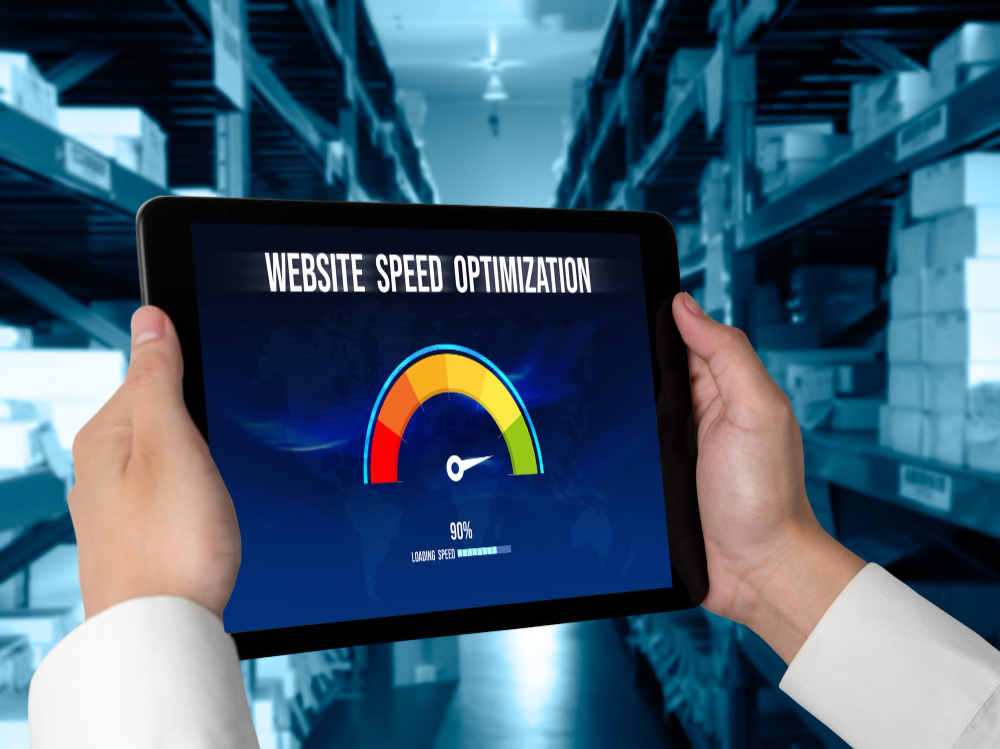
In today’s fast-paced digital world, speed is not just a luxury—it’s a necessity. Especially on mobile.
With over 60% of all web traffic now coming from mobile devices, the need to optimize your mobile site speed is more important than ever. A slow-loading mobile website can kill conversions, drive users away, and damage your brand’s credibility. But the good news? Speeding up your mobile site is very achievable, with the right strategy and tools.
Imagine a shopper on a train trying to load your store on their phone – and watching a blank screen for seconds. Mobile site speed optimization is crucial because impatient visitors won’t wait. In fact, Google’s research shows that over half of mobile users will abandon a site that takes longer than three seconds to load. Even worse, as of 2022 nearly 60% of all web traffic comes from mobile devices. If your Shopify store drags on phones, most of your potential customers never see your products. Plus, Google now uses mobile-first indexing, meaning it ranks sites based on the mobile version of your page. In short, slow mobile pages hurt both user experience and search rankings. In this guide, we’ll walk through friendly, practical steps for Mobile Site Speed Optimization on Shopify, no PhDs required! We’ll explain why speed matters and share easy-to-follow tips to speed up your mobile site.
In this comprehensive guide, we’ll explore why mobile speed matters, what impacts it, and actionable ways to optimize your mobile site speed to improve performance, conversions, and customer satisfaction.
Why Mobile Site Speed Optimization Matters for Your Business
Think about the last time you clicked on a link from your smartphone, only to stare at a spinning wheel or a blank screen. You likely gave up and hit the back button. You’re not alone.
1. Users Expect Fast Results
According to Google, 53% of mobile visitors will leave a site if it takes more than 3 seconds to load. That means even a small delay can cost you a large chunk of traffic.
2. Speed Impacts SEO
Google uses mobile site speed as a ranking factor. If your site is slow, it could lose visibility in search results, even if your content is great.
3. Conversions Are Tied to Speed
Studies show that a 1-second delay in mobile load time can reduce conversions by up to 20%. Whether you’re selling products or collecting leads, a faster site can drastically improve your bottom line.
4. Enhanced User Engagement
Mobile users are far more likely to interact with your content, explore site features, and stay longer when pages load quickly. By optimizing your mobile site speed, you can boost page views, extend session durations, increase user interactions, and—especially for e-commerce sites—drive higher sales volumes.
5. Lower Bounce Rates
Fast-loading mobile pages significantly reduce bounce rates by minimizing user frustration and site abandonment. Keeping bounce rates low is essential for maintaining visitor retention and encouraging deeper engagement with your content.
6. Increased Conversion Rates
Speed optimization directly influences conversion rates. Industry data, including Shopify’s findings, show that even a half-second improvement in loading times can lead to noticeable gains in conversions, whether that means completing purchases, newsletter sign-ups, or form submissions. A faster site enables users to move through the conversion funnel more smoothly and efficiently.
7. Improved Search Engine Rankings
Major search engines like Google and Bing factor mobile speed into their ranking algorithms. Prioritizing fast mobile load times not only enhances user experience but also strengthens your SEO performance, increasing your site’s visibility and positioning in search results.
What Slows Down a Mobile Site?
Before diving into how to optimize mobile speed, let’s identify the common culprits that drag down performance:
| ❌ Issue | Impact on Mobile Site Speed |
|---|---|
| Large image files | Unoptimized images take longer to load, increase page weight, and consume mobile bandwidth. |
| Render-blocking JavaScript or CSS | Scripts that load before content delay the rendering of visible elements, slowing down page load. |
| Too many HTTP requests | Each file request (images, JS, CSS) adds overhead, increasing total load time. |
| Not using a CDN | Hosting files far from the user results in higher latency and slower content delivery. |
| Lack of caching | Without caching, users must re-download files on every visit, increasing load times. |
| Poor hosting or server performance | Low-quality or shared servers can bottleneck performance, no matter how optimized your frontend is. |
Key Strategies for Mobile Speed Optimization
Improving your mobile speed usually means optimizing images, trimming code, and leveraging smart design. Here are the core steps in a nutshell:
- Optimize Images and Media – Compress and resize graphics so they load quickly on phones.
- Minimize Apps and Extra Code – Remove or lazy-load unneeded apps, scripts, and CSS that bloat pages.
- Enable Lazy Loading and Caching – Delay offscreen images and leverage browser caches for repeat visits.
- Choose a Fast Shopify Theme – Use a modern, lightweight theme designed for speed (Shopify’s free OS2.0 themes like Dawn).
- Keep Design Simple – Limit animations, heavy sections, and large videos on landing pages.
- Test and Monitor Performance – Use tools like Google’s PageSpeed Insights, Shopify’s Speed Report, or GTmetrix to identify bottlenecks.
Below we’ll unpack each of these strategies with examples and tips. You’ll see how even small changes, like swapping a GIF for a static image or updating your theme can shave seconds off your load time.
How to Speed Up Your Mobile Site: 14 Actionable Tips
Now that we’ve diagnosed the problem, here are 14 strategies to help you speed up your mobile site and create a smoother, more responsive user experience.
1. Run a Mobile Speed Audit
Start by identifying your current performance using tools like:
- Google PageSpeed Insights
- GTmetrix
- Lighthouse
These tools give you a breakdown of your site’s mobile performance, identify issues, and recommend optimizations.
2. Optimize Image Sizes
Images account for over 50% of the total page weight on most websites. Compressing and resizing them can drastically improve load speed.
- Use next-gen formats like WebP for modern browsers.
- Use responsive image tags (<picture> or srcset) to serve smaller versions on mobile.
- Compress images using tools like TinyPNG, ImageOptim, or through Shopify apps.
3. Minimize and Defer JavaScript
JavaScript is often necessary—but too much of it can block rendering and delay page interaction.
- Minify scripts to remove unnecessary code and spaces.
- Defer or async-load non-essential scripts so they don’t block the initial page render.
- Remove unused libraries or third-party widgets that don’t add value.
4. Reduce HTTP Requests
Each file on your page (CSS, JS, images, fonts) is an individual HTTP request. Reduce this number by:
- Combining CSS and JS files where possible.
- Using icon fonts or SVGs instead of multiple image icons.
- Leveraging lazy loading for offscreen content.
5. Enable Lazy Loading
Lazy loading defers loading images or content until the user scrolls to that part of the page. This speeds up initial load times and reduces bandwidth usage. Most modern platforms (like Shopify and WordPress) support this natively or via plugins.
6. Use a Content Delivery Network (CDN)
A CDN stores cached versions of your site on servers around the world. It reduces latency and ensures faster delivery for users no matter where they are.
Popular CDN options include:
- Cloudflare
- Akamai
- Fastly
Shopify stores, for instance, already use Fastly as a built-in CDN, which helps accelerate mobile site performance globally.
7. Choose a Mobile-Optimized Theme
If you’re using a CMS like Shopify, WordPress, or Wix, make sure your theme is optimized for mobile speed.
A bloated or poorly coded theme can ruin all your other speed efforts.
- Stick with lightweight, fast-loading themes.
- Avoid themes overloaded with features you don’t use.
- Test your theme’s performance using PageSpeed Insights before installing.
8. Use Accelerated Mobile Pages (AMP) (when relevant)
AMP is a Google-backed project that delivers ultra-fast mobile versions of web pages. It’s most useful for blogs or content-heavy pages, not ideal for complex eCommerce product pages, but it can drastically improve loading speed and mobile SEO in the right context.
9. Implement Browser Caching
Browser caching stores website assets (like logos, CSS files, etc.) locally in a user’s browser, so repeat visits are much faster.
Make sure your server or platform is configured to leverage caching headers, like:
http
CopyEdit
Cache-Control: max-age=31536000
If you’re on Shopify, browser caching is handled automatically—but for other platforms, you may need to configure .htaccess or use a caching plugin.
10. Minify CSS, HTML, and JavaScript
Minification removes whitespace, comments, and unnecessary characters from your code. This can reduce file sizes by up to 40% and speed up parsing by the browser.
Use tools like:
- UglifyJS
- CSSNano
- HTMLMinifier
Or automate it via a build process (Webpack, Gulp) or plugin.
11. Avoid Redirect Chains
Every redirect adds extra HTTP requests and increases wait time.
- Limit the use of mobile redirects (e.g., example.com → m.example.com).
- Ensure all pages redirect directly to the final URL.
- Fix 301/302 chains using tools like Screaming Frog or Ahrefs.
12. Prioritize Critical Content with “Above-the-Fold” Optimization
Structure your mobile pages so the above-the-fold content loads first, before any user interaction.
Use techniques like:
- Critical CSS: Inline only the essential CSS needed for the first render.
- Load non-essential content after the initial load (via async JS).
- Keep above-the-fold sections lightweight.
This reduces First Contentful Paint (FCP) and improves perceived performance.
13. Reduce Third-Party Scripts
Third-party scripts like analytics, chatbots, ad tags, and social buttons can significantly slow down mobile performance.
Audit and remove any that are:
- Not essential to core business objectives.
- Duplicated or misconfigured.
- Not loaded asynchronously.
Try using Google Tag Manager to better control script loading behavior.
14. Upgrade to a Faster Hosting Environment
If your server is slow, your site will be too, regardless of frontend optimizations.
Consider:
- Switching to managed hosting (like WP Engine or Kinsta for WordPress).
- Using Shopify (which offers blazing-fast cloud infrastructure).
- Moving away from shared hosting to VPS or dedicated cloud environments.
A One-Second Decrease In The Shopify Page Load Time Can Increase Conversions By 1% – 7%
How to Measure and Monitor Mobile Speed Over Time
Optimization is not a one-time job. It’s a continuous process of monitoring and refining performance.
Set up tools to monitor:
- Google Search Console’s Core Web Vitals
- Lighthouse performance scores
- Real User Monitoring (RUM) via Cloudflare or New Relic
Track key metrics like:
- First Contentful Paint (FCP)
- Largest Contentful Paint (LCP)
- Time to Interactive (TTI)
- Total Blocking Time (TBT)
Improvements in these metrics often lead to better user experience and conversion rates.
Mobile Site Speed Optimization: A Quick Checklist
Here’s a simplified checklist you can use:
- Compress and serve responsive images
- Minify CSS, JavaScript, and HTML
- Enable lazy loading for images and videos
- Use a fast, mobile-optimized theme
- Eliminate render-blocking resources
- Use a CDN
- Enable browser caching
- Avoid redirect chains
- Limit third-party scripts
- Defer or async non-critical JS
- Monitor performance regularly
- Upgrade hosting if needed
Read more: Shopify Speed Optimization: A Complete Guide for Better Performance
Best tools to test mobile site speed
After making improvements, you’ll want to verify the results and monitor ongoing performance. There are several free and easy tools for this:
- Google’s PageSpeed Insights
- Lighthouse
- WebPageTest
- GTmetrix
- Pingdom website speed test
- Real User Monitoring (RUM) tools
- Browser developer tools
Optimizing mobile site speed is essential for enhancing user experience and improving search rankings. To assist developers and marketers, we recommend leveraging the following proven tools for comprehensive mobile performance testing and optimization:
1. Google PageSpeed Insights
This free tool from Google evaluates your website’s performance across both mobile and desktop platforms. PageSpeed Insights generates a score out of 100 and provides actionable recommendations to enhance load times and overall site efficiency. Simply input your URL to receive a detailed report pinpointing optimization opportunities.
2. Lighthouse
Accessible as a Chrome browser extension or via Chrome DevTools, Lighthouse conducts in-depth audits of web performance metrics, including mobile site speed, accessibility, and SEO best practices. It delivers a granular breakdown to help improve key areas impacting user experience.
3. WebPageTest
WebPageTest enables testing your website’s loading speed from multiple geographic locations and device types. It offers a detailed waterfall analysis of resource loading, tracking metrics like time to first byte, start render, and full load time specifically for mobile environments.
4. GTmetrix
GTmetrix combines performance analysis with actionable insights, helping teams identify bottlenecks and track speed improvements over time. Its historical reporting feature is useful for ongoing mobile optimization efforts.
5. Pingdom Website Speed Test
Pingdom tool assesses website speed with performance grades and detailed insights into load times, page size, and HTTP requests on mobile devices. It’s ideal for quick diagnostics and monitoring.
6. Real User Monitoring (RUM) Tools
For a real-world view of mobile site speed, implementing RUM tools such as Google Analytics is invaluable. These tools collect and analyze live user data, offering insight into actual user experiences and revealing performance issues under real conditions.
7. Browser Developer Tools
Modern browsers provide powerful built-in tools for simulating mobile devices and measuring speed metrics. For example, Chrome DevTools includes a mobile emulator that allows developers to test mobile site performance directly from their desktop, facilitating quick iteration and debugging.
Conclusion: Faster Mobile Speed = Happier Customers and Better Rankings
In today’s mobile-driven world, Mobile Site Speed Optimization is not a luxury — it’s a necessity. A speedy Shopify store means better customer experiences, more sales, and higher SEO rankings. By following the tips above (optimizing images, trimming code, choosing the right theme, and using the right tools), you can shrink your load times dramatically.
Remember, Shopify already gives you a head start with global servers and automatic image CDN, but your focus should be on what you control: lean content and smart design. Even small changes — like switching to WebP images or removing one bulky app — can make a big impact.
If all this sounds overwhelming, know that you don’t have to do it alone. Experts in Shopify Site Speed Optimization can audit your store and implement these improvements quickly. Fast mobile performance keeps your customers happy and your business growing.
Check Loading Speed of Website Effortlessly
Give your users a seamless fast web experience by testing website loading speed for Free. Don’t let Slow Rendering hamper your user experience
FAQ: Mobile Site Speed Optimization and Shopify
- Why is mobile site speed optimization so important?
Because mobile users expect fast experiences. Slow load times lead to higher bounce rates and lost sales. Google’s algorithms also use mobile speed as a ranking factor, so a fast mobile site boosts SEO. In short, speeding up your mobile pages means more conversions and better search visibility. - What common issues slow down a Shopify mobile site?
The biggest culprits are usually large images, too many apps or scripts, and bloated themes. For example, an uncompressed image can be several megabytes, and each extra app adds network requests. Also, too many homepage sections or unoptimized code can delay rendering. Auditing these elements (images, apps, third-party code) is key. - Which tools can I use to test my mobile site speed?
Great tools include Google’s PageSpeed Insights and Lighthouse (they give mobile-specific scores and tips), Shopify’s Online Store Speed Report, and third-party services like GTmetrix. These tools highlight exactly what’s slowing you down (like render-blocking resources or non-cached images). Use them regularly to track improvements. - Does improving mobile site speed affect SEO?
Absolutely. Google uses mobile-first indexing, meaning it looks at your mobile pages to rank your siteshopify.com. Fast-loading mobile pages lead to better Core Web Vitals scores, which Google favors. So by optimizing mobile speed, you’re effectively boosting your SEO too. - How often should I review my Shopify store’s speed?
It’s smart to check your site speed whenever you make big changes — like adding a new app, theme update, or major content shift. A quick monthly check is a good habit, or after seasonal events when your traffic spikes. Regular monitoring helps catch issues early. - Can third-party apps slow down my Shopify site?
Yes. Each app can add CSS, JavaScript, and images that must load on your page. If an app is not optimized (or if it’s doing extra tasks on the client side), it can noticeably drag load times. Review installed apps periodically and remove any that you don’t use. Sometimes there are lighter alternatives or code snippets that achieve the same goal. - What should I look for in a Shopify theme for speed?
Choose a lightweight theme that is mobile-responsive and regularly updated. Shopify’s free themes (like Dawn, Debut, or other OS2.0 themes) are good choices because Shopify optimizes them for performance. Avoid themes with excessive built-in animations or complex features you don’t need. Check the demo theme’s performance (via speed tools) before committing. - Are there any Shopify-specific features for speed?
Yes. Shopify automatically serves images in optimal formats via its CDN, and it provides an Online Store Speed Report that uses real user data. Also, Shopify’s infrastructure is cloud-based and fast, so you benefit from that out of the box. For checkout, Shopify’s Shop Pay accelerates the process for mobile users (Shopify found mobile checkout conversions were much higher with Shop Pay). For your theme, consider using Shopify’s native Shopify Liquid features and OS2.0 sections, which can be more efficient than many third-party apps.
Will a faster mobile site really boost my sales?
In most cases, yes. Faster sites keep users engaged; visitors are more likely to stay, browse more pages, and complete purchases. According to Google, speeding up page load time by just a couple of seconds can significantly increase conversion rates. In e-commerce, speed is a competitive advantage.















